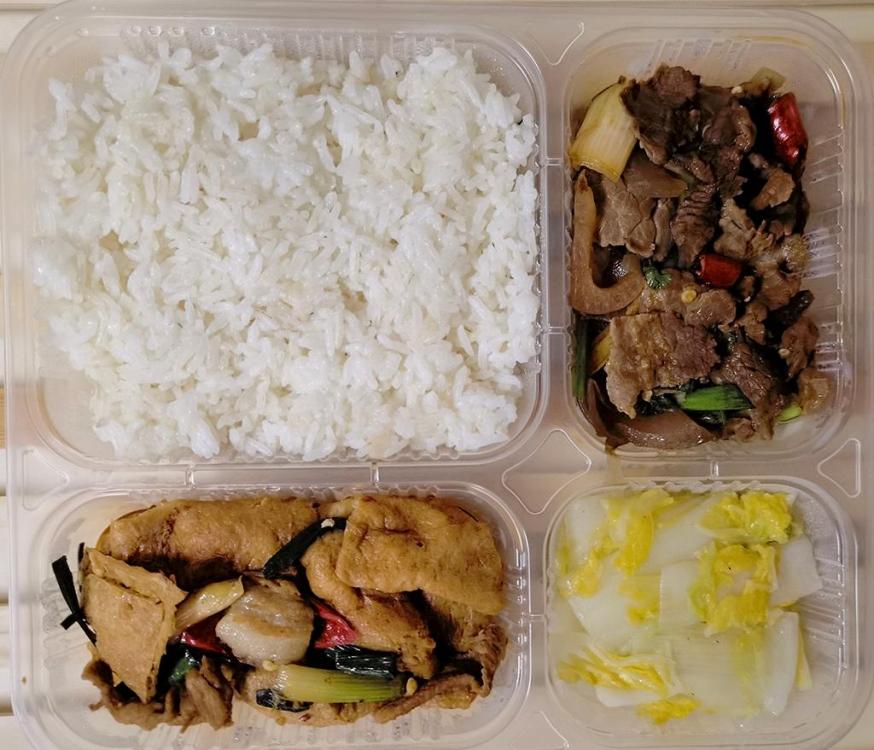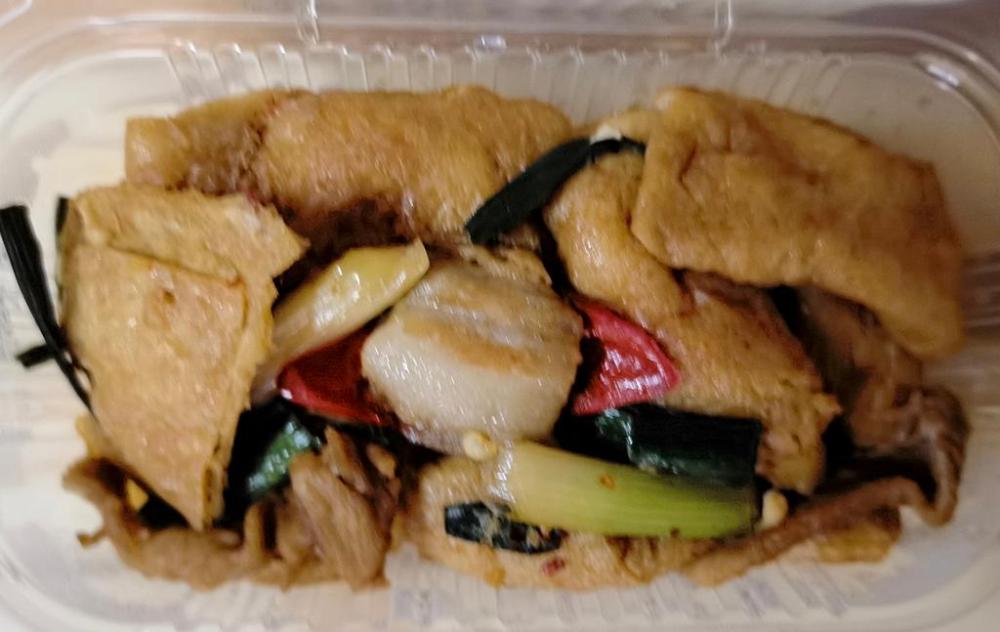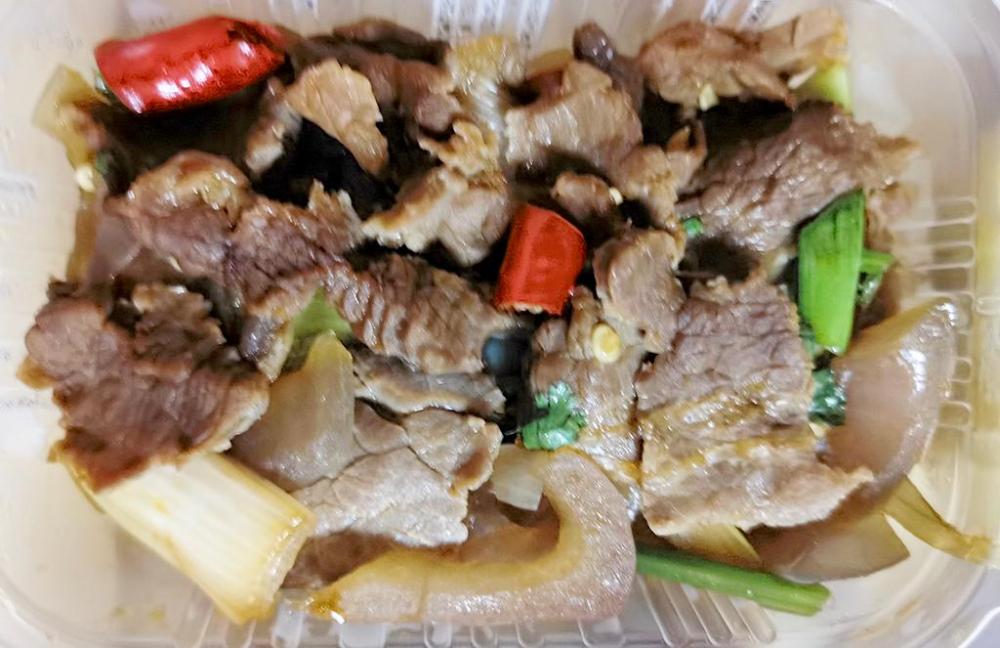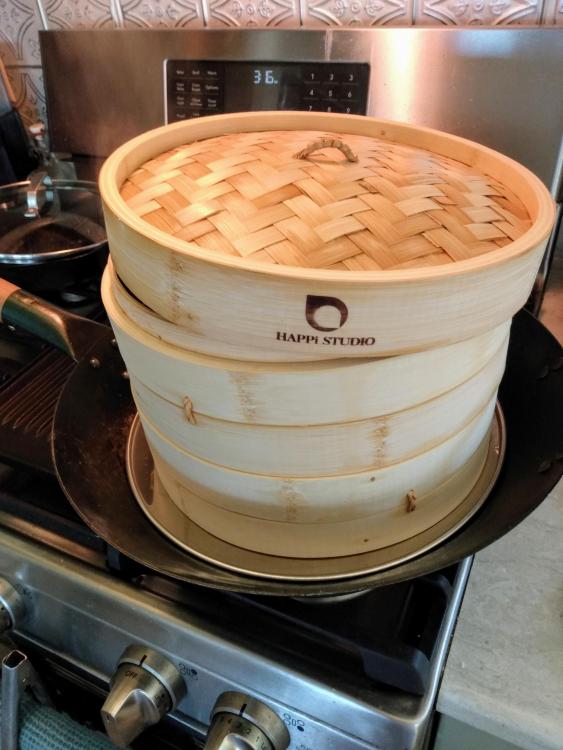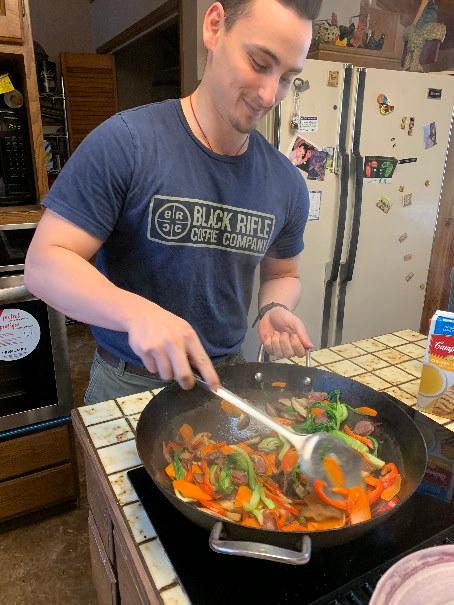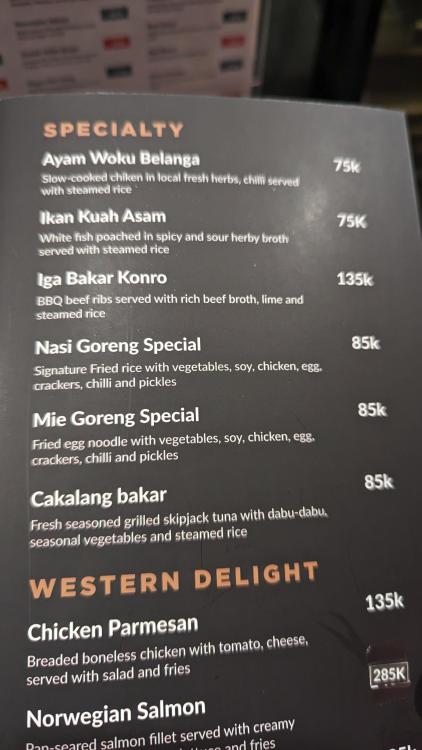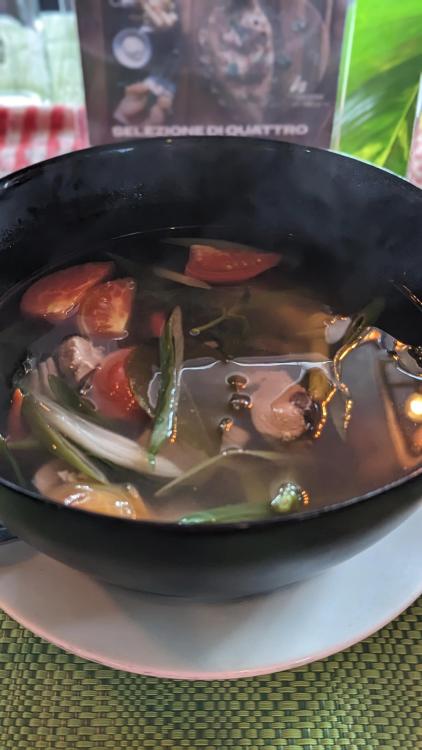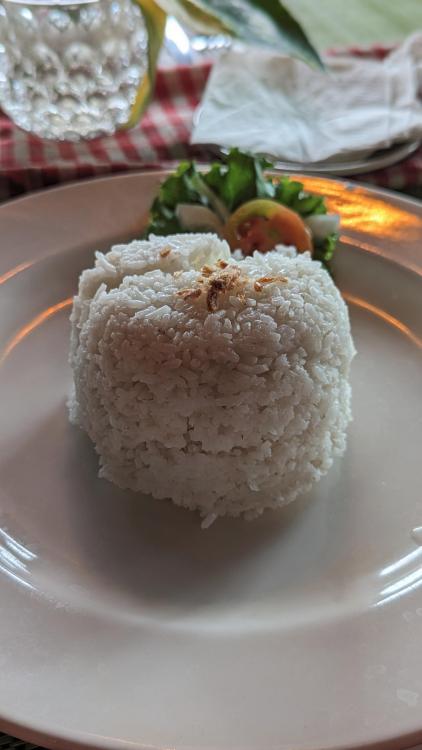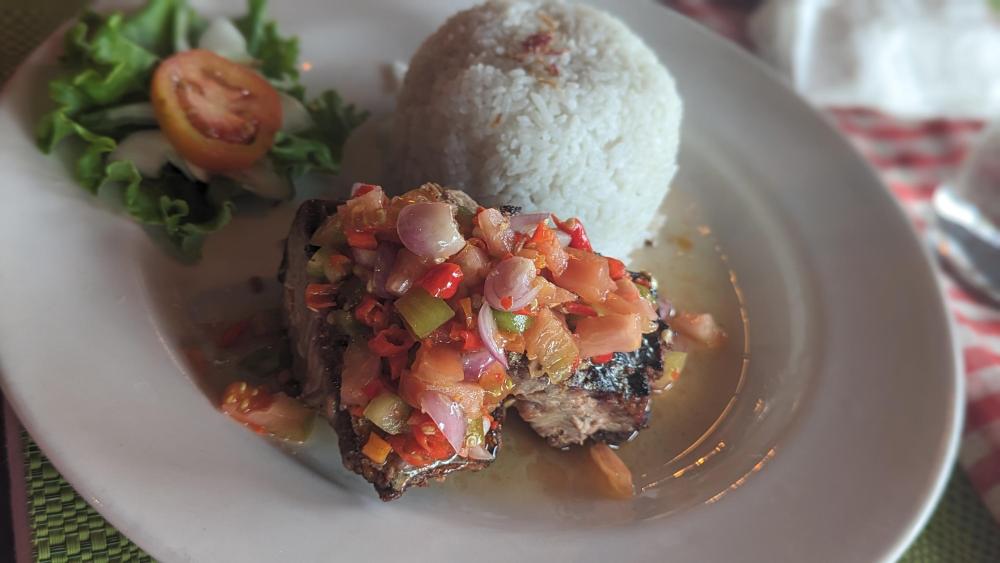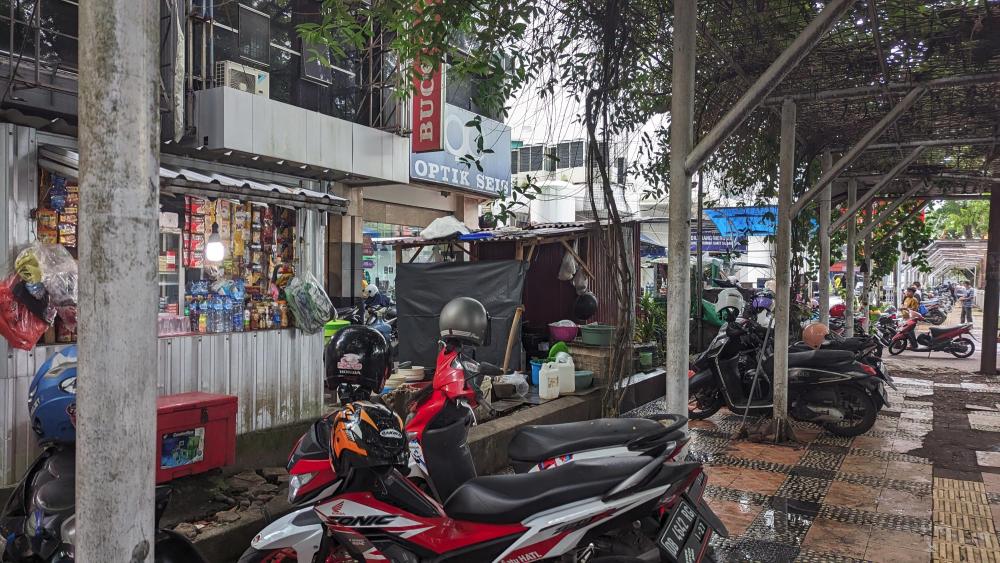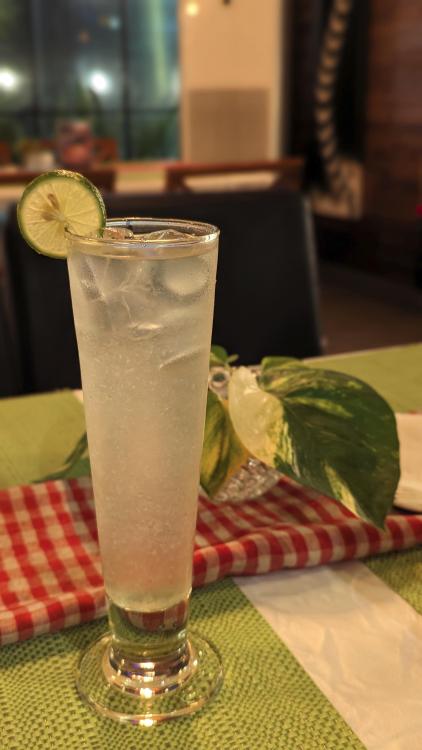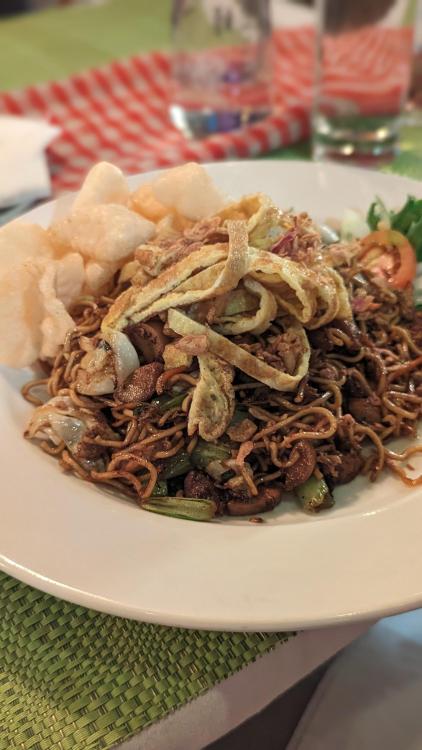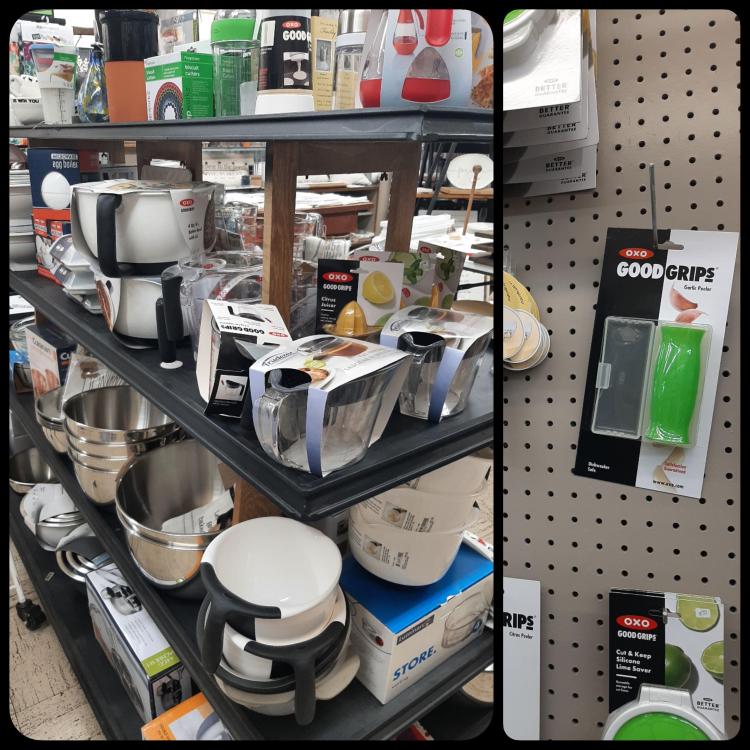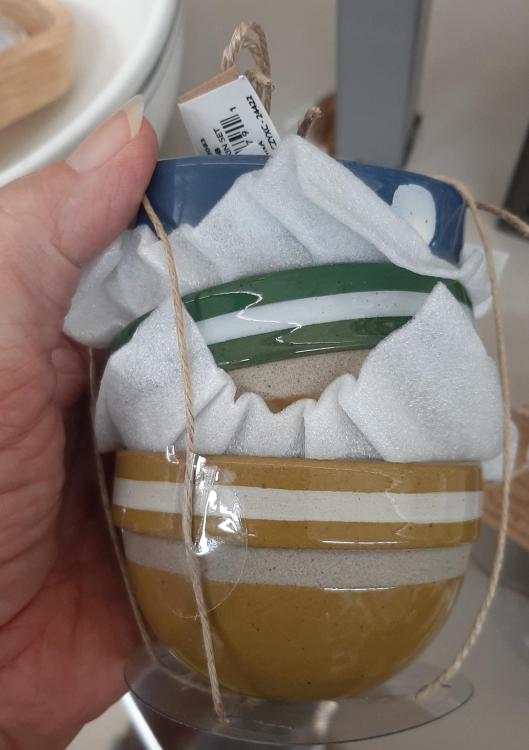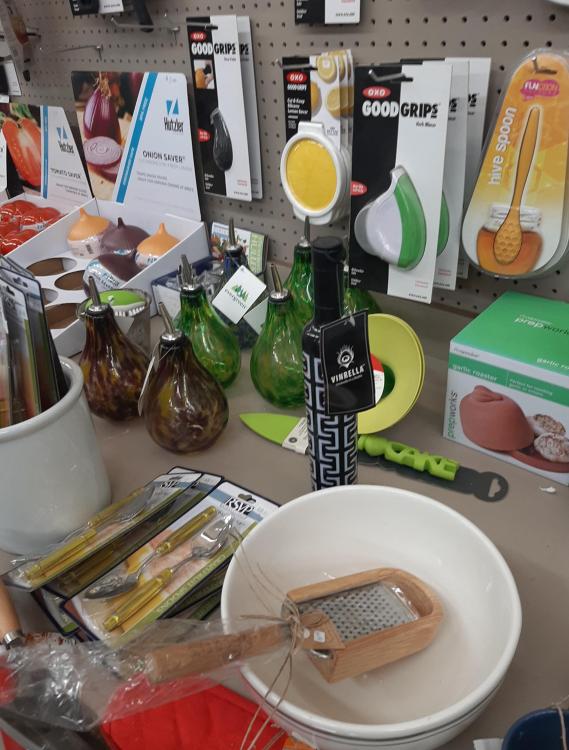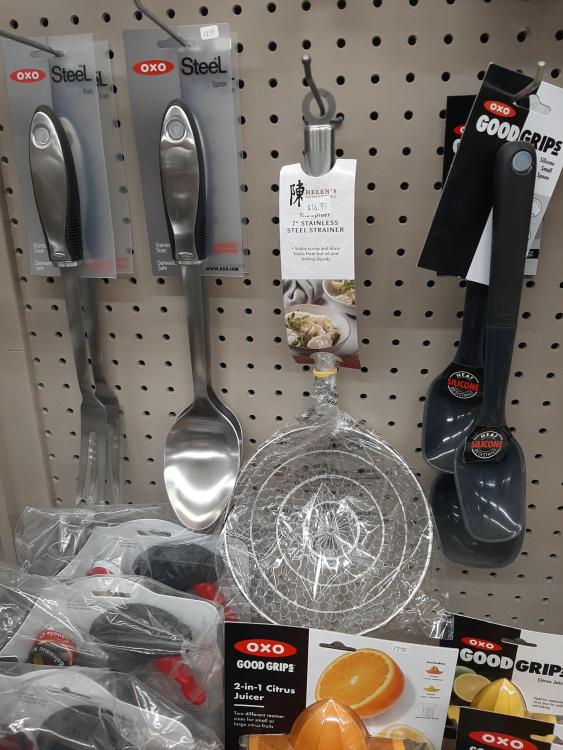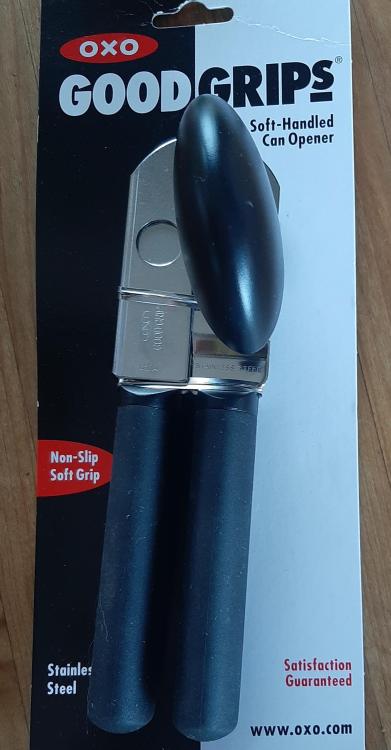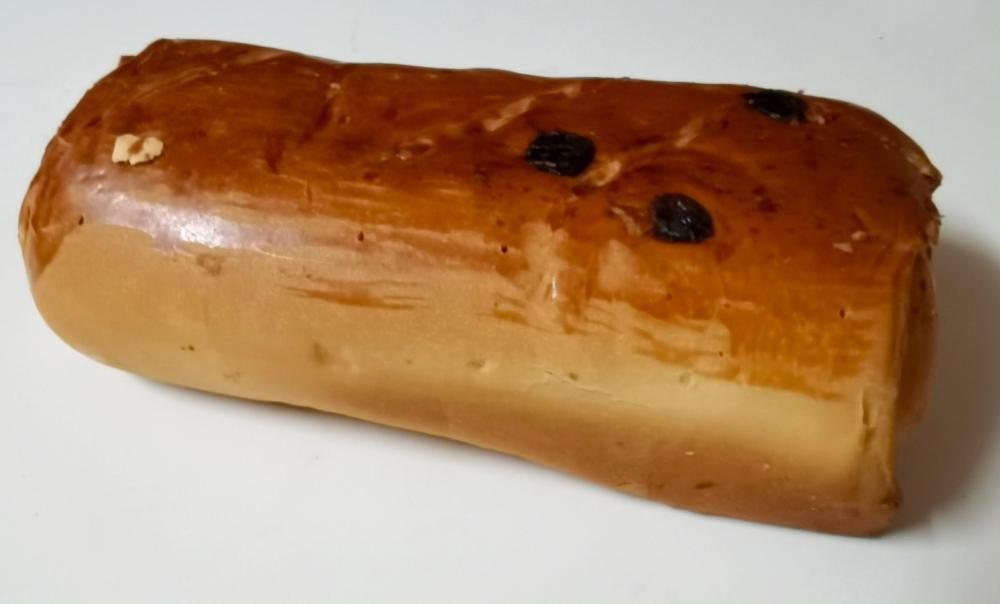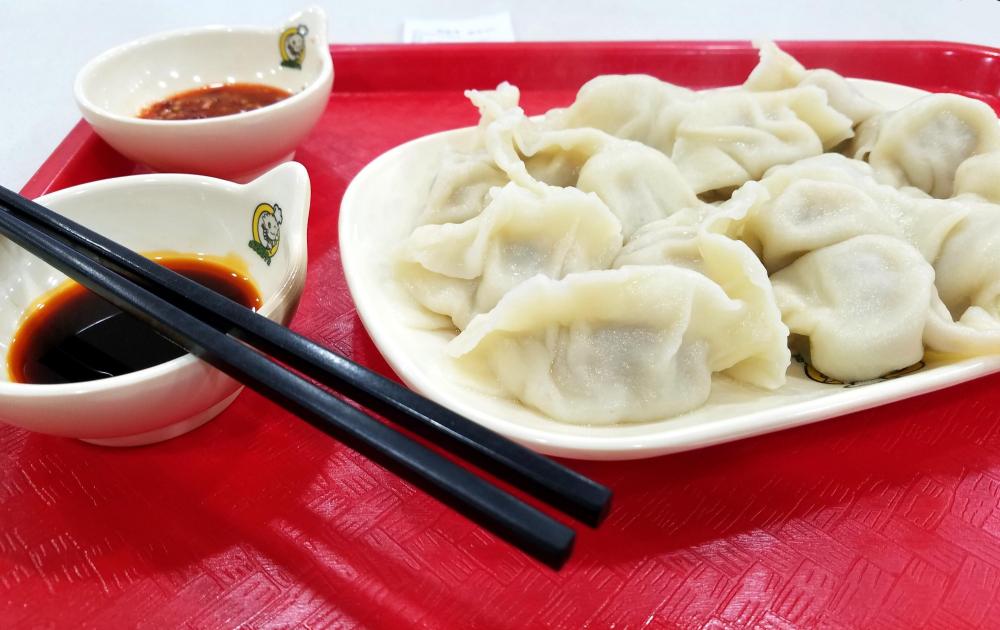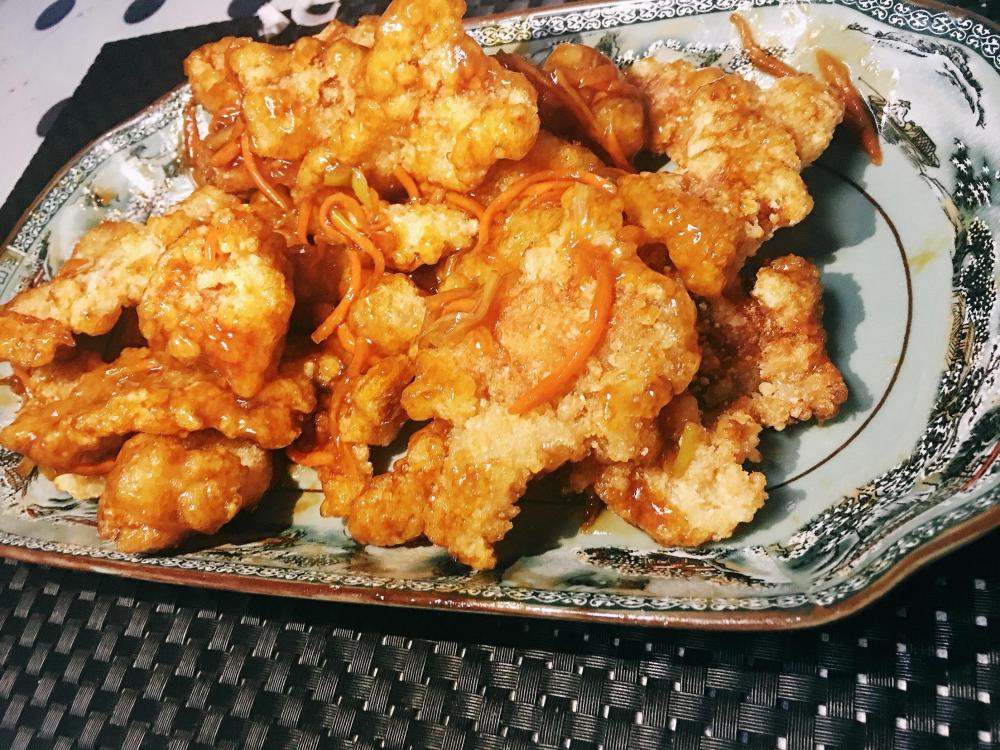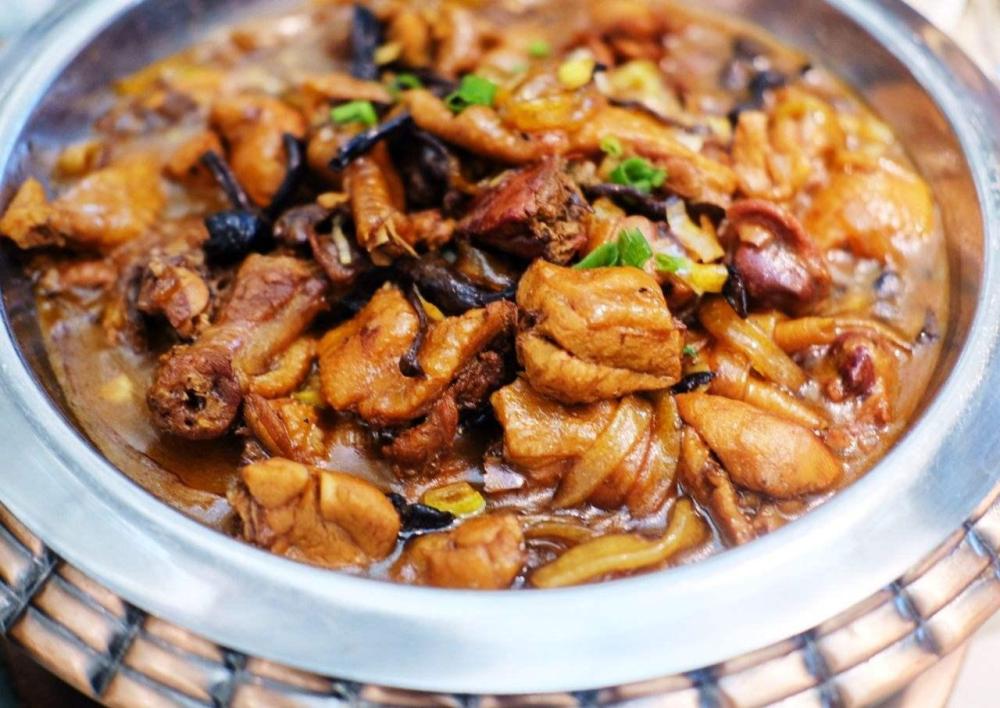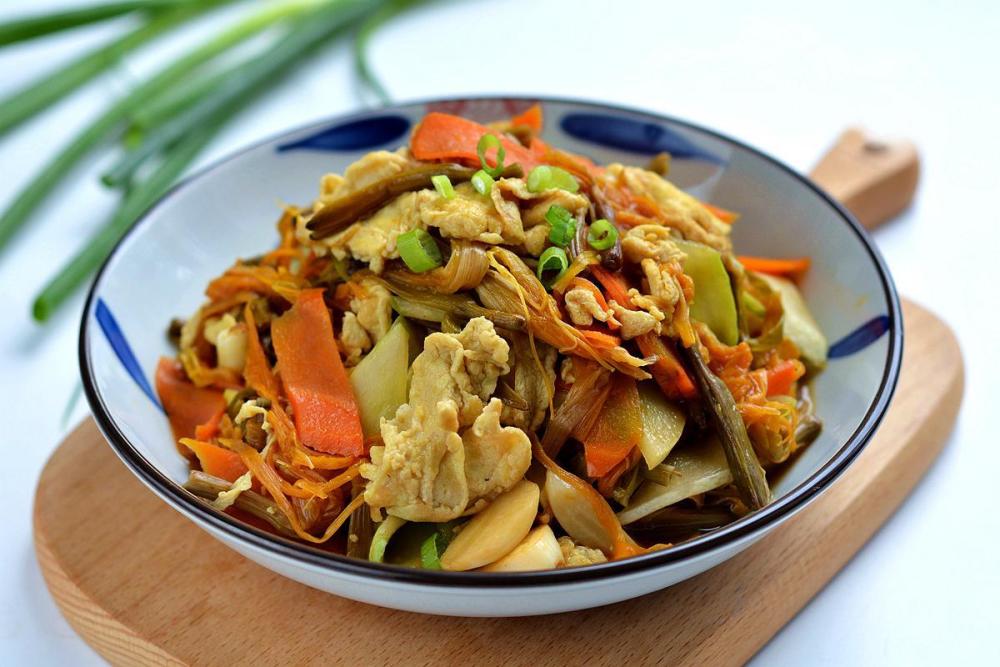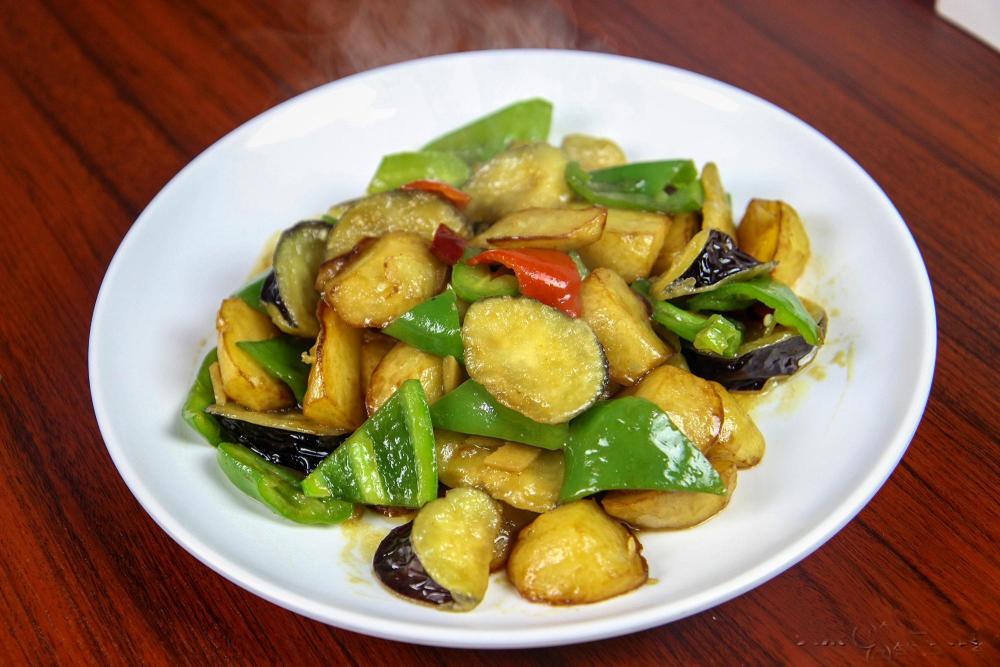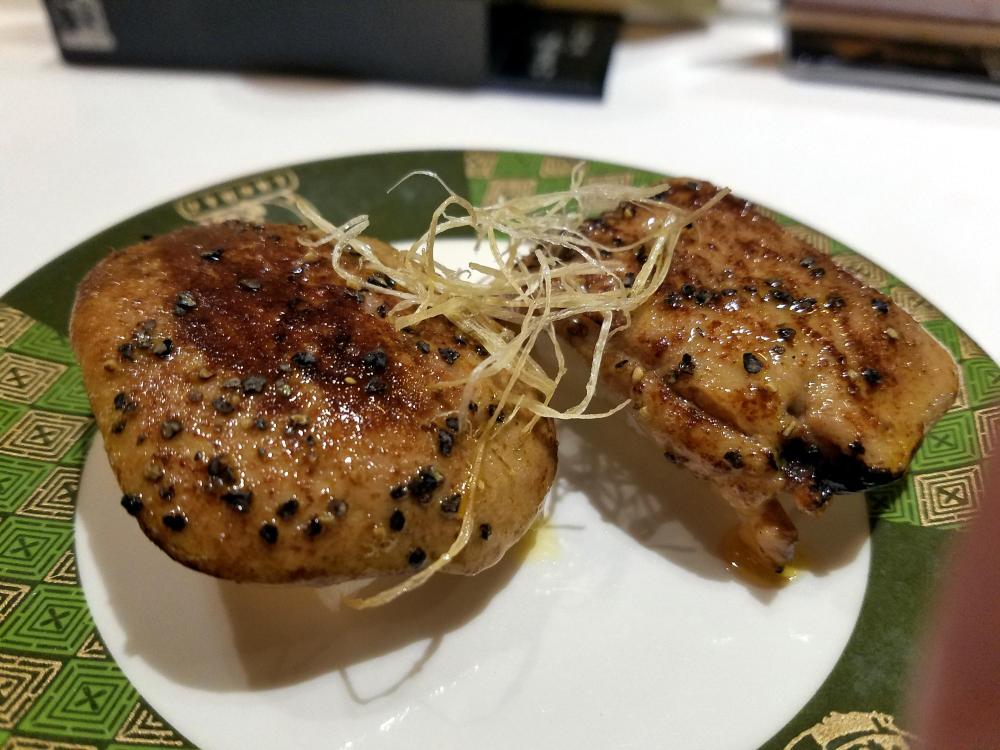Search the Community
Showing results for 'wok'.
-
My YouTube feed has become saturated with videos of Indonesian people making popular Indonesian food. Go figure. One of the dishes that has popped up several times is this one - a grilled chicken dish that seems to be common on the island of Lombok, right next to Bali. At this time, I've never been to Lombok, nor have I had this dish anywhere in Indonesia but it just looked so good I couldn't resist watching a bunch of the videos and then coming up with this recipe which is like an amalgamation of them. Most of the time, it's for grilling a whole, spatch-cocked chicken, but it's just two of us so I adapted it to make 4 chicken thighs. Ideally cooked on a wood burning grill, I have to make do in my apartment with a cast iron grill pan. I imagine it would also be really good on chicken wings and also fish Marinade: 1 t powdered dried turmeric 1t salt about 2 ounces of water Bumbu (spice paste): 2-3 fresh long hot red chillies (like Prik chee faa in Thailand) 2 fresh/frozen Thai chillies 2-3 fresh Cayenne or other long, red, skinny chilli. I can't get that here, so I used a couple of dried ones, soaked until soft 4 small shallots 4 cloves garlic 1 inch fresh/frozen kencur - substitute the same amount of galangal if kencur is unavailable 2 candlenuts 2t Indonesian or Malaysian shrimp paste (terasi or belacan respectively), toasted then crumbled 1t salt 2oz oil for frying 8oz coconut milk 2t palm sugar 1/2-1t white sugar 1/2 lime 1. In a small blender or mortar grind the bumbu into a fine paste 2. In a wok or deep pan, heat the fry oil until shimmering then add the bumbu paste and fry, stirring constantly, until the oil starts to separates back out of the paste. 3. Add the coconut milk and stir to combine and bring to a boil. Add the palm sugar and white sugar and simmer and stir constantly until much thicker and you start to see oil separating out of the liquid. Set aside. This is now the sambal used for grilling and dipping later. 4. Preheat your grill to medium heat and mix the marinade ingredients in a small dish 5. Once the grill is hot, brush the marinade on both sides of the chicken and place on the grill, skin side down. 6. Flip after a few minutes and cook on both sides until about halfway cooked through. 7. Using a brush, brush the sambal on the chicken then flip, and brush more on the other side. Continue brushing/flipping until the chicken is cooked through. 8. Squeeze the lime juice into the remaining sambal (sauce) and serve on the side.
-
I use a regular two sided razor blade. I don't bother putting into the lame. @Kerry Beal, it isn't very heavy. Bottom and top weight just 5 lbs. Thanks @Smithy. I know. I love their cookware. Did you see the set that comes with the hanging shelf? Unfortunately I really do not need more cookware. But Moe is as much of an enabler as everyone here on eGullet. His suggestion was I would just get rid of the pots I don't need. I'm really not in the market for a full set, but I do think maybe after Christmas I will order the Prospector roasting tray and maybe one of the woks. I really wanted the Challenger, and although it was heavy, it was really the price that put me off. By the time I paid for the pan, the shipping and the duty and taxes, with the exchange I was looking at $700.00. I could have purchased the Netherton Cloche from Breadtopia in the US and a retailer in Canada, but it was less expensive to order directly from the Foundry.
-
I agree that a lot of Kindle books are poorly formatted, but at these discount prices it's nice to have an electronic copy alongside a print one. It's particularly true for oversized books — titles like Kenji Lopez-Alt's The Wok are great to look at but lousy to read in a comfortable chair. That said, if you're willing to at least check them out, a lot of libraries now will let you borrow e-books through services like Overdrive; most have a "Read with Kindle" option. That would let you weed through them without obligation.
-
I am referring to the velveting technique where you coat the thinly sliced meat of choice in egg, constarch, cooking wine, then just before adding to the hot oil in the wok or fryer you add a tablespoon or two of oil to the meat to prevent the meat from sticking together. For me, this never works and i find myself manually trying to pull them apart after the quick fry. This got me thinking, whats the harm in adding more oil ( same oil as the cooking oil ) I figure if using a deep fryer your just topping off the oil that probably has been lost in previous frys. My only forseeable issue could be if using too much oil it might drop the hot oil temp down. I suppose i should test this in small batches so i can use more oil then meat. I guess i am posting this to see if others who sir fry often use more oil then is suggested in pretty much every online recipe because it never seems to be enough to prevent sticking together.
-
I understand the conundrum. I bought a 4.7 quart copper wok (28cm) to make some Korean recipes and ended up realizing it was ALMOST the perfect size for making a gallon of yogurt. The 4 quarts of milk fit fine, but the temperature probe's holder didn't fit "above" the milk line. And I wanted a bigger-diameter bottom for more induction contact and a smaller-diameter top to reduce evaporation. I ended up picking up a 6.1 quart (24cm) pot-au-fue that fits the bill. It's kind of like a saucier with taller walls (or a dutch oven with a curved saucier-style bottom). Then I realized that if I just had a smaller (20cm) pot-au-fue, I'd have the perfect-sized vessel for making half a pound of pasta for myself (and with an optimal top diameter, to reduce evaporation). Ironically I'm not planning to make any actual pot-au-fue with the pans. 🤷♂️ And now you've alerted me to the presence of a 4 quart rondeau... All y'all are a bunch of enablers. 😆 😊 I'm going to have to rethink the budget, post-holidays.
-
中饭: Lunch 淮山骨头汤 (huái shān gǔ tou tāng) - Huaishan Bone Soup (pork bone soup with Chinese yam) 凉拌牛肉 (liáng bàn niú ròu) - Cold Dressed Beef ( a sort of beef and allium salad) 爆炒油豆腐 (bào chǎo yóu dòu fu) - Burst-Fried-Oil Tofu ("Burst Fried Oil" is the literal term for the cooking technique involving very high temperature wok cooking. You know the kind of thing all those jokers with their high octane burners think is daily routine. It isn't or they wouldn't need a special term for it when it is occasionally used, would they? /endrant ) 娃娃菜 (wá wa cài) - Baby Chinese Cabbage Burst-fried Tofu Cold-dressed Beef
-
Various Asian sauces/condiments/products premium brand guide?
Katie Meadow replied to a topic in Kitchen Consumer
Resources for brands and ingredients from both Andrea Nguyen and Momofuku are very useful as suggested above, but availability may vary according to where you live and what Asian groceries exist near you. Beyond that, many products may be a matter of personal preference. I don't find any one brand to be excellent across the board. Just a few of my favorites: Peanut oil: Love Lion and Globe. Red Boat fish sauce. Yes it's pricy but I don't use a lot of it. Huy Fong chili garlic sauce. The most used basic Asian hot sauce in our house. I prefer it to Sriracha, generally. Grandma chili crisp, the real brand name escapes me just now. Blank Slate Sichuan chili oil. I order it from Mama Market Wok Mei all natural oyster sauce. I like the taste. Don't get too excited it does say "Oyster flavored." Mala Market brand Chinese Sesame Paste SOY sauce: Although I really don't cook Japanese food much, my two current favorites soy sauces are: Haku Black Garlic Shoyu. This brand makes several others that I've not tried Smoked Shoyu. I get it from Amazon: https://www.amazon.com/Soy-Sauce-Japanese-Additives-【CHAGANJU】/dp/B08VGBWQJW/ref=sr_1_3_sspa?crid=11CUS1WL6973J&keywords=smoked+shoyu&qid=1680725024&sprefix=smoked+shoyu%2Caps%2C171&sr=8-3-spons&psc=1&spLa=ZW5jcnlwdGVkUXVhbGlmaWVyPUEyVVdRNk5SRkdPUjM2JmVuY3J5cHRlZElkPUEwMDAwNTM0M1VXQUtKWjNOM0hFJmVuY3J5cHRlZEFkSWQ9QTA2Nzg2NDgxVzFGMlE3OE9YQ0kwJndpZGdldE5hbWU9c3BfYXRmJmFjdGlvbj1jbGlja1JlZGlyZWN0JmRvTm90TG9nQ2xpY2s9dHJ1ZQ== Peanut sauce: Jade brand, easily available in big supermarkets. I flinch every time a Chinese recipe calls for peanut butter. This Jade stuff is really useful, and it pack a punch. I use it for chicken stir-fry as an additional ingredient for a sauce. Dry red chiles: I use a lot of Chiles de Arbol for various things. I also like the Mala Market Facing Heaven Chilis. The aren't that hot, but the have a very nice flavor. Dried black tree fungus: I prefer the smaller more delicate cloud ears, but they aren't often available in the Chinatown markets that I depend on. So, I splurge on the ones from Mala Market. Yeah, Mala Market is expensive. They also have an extensive selection of Sichuan peppercorns. Thee are a few off the top of my head. I'm not very adventurous; once I find a product I like I tend to stick with it. -
I found a 12" bamboo steamer at a yard sale a couple decades ago. A ticket on it's carrying bag said it was made in 1982. I always put it in an inch of water in an old enamel lobster pot and it finally unraveled. I just got this 10" model today from Amazon and it's already upped my game: a steaming ring fits my carbon steel wok perfectly...
-
Long time lurker here, have made a few posts also. Looking for info, but most of all guidance. I've been doing a remodel on a 1950's ranch here in the NorthEast. We've owned the house for almost 30 years, paid off in full, looking now to return to it and "retire". Doing most of the work myself, but just had the electrician in to update some wiring, especially the kitchen and bathroom. Recent visit from the plumber to extend the natural gas line to the kitchen. We've purchased most of the appliances already, mainly Bosch. 24" fridge, 24" stacking washer/dryer, 24" dishwasher. Higher end JennAir hood over the range. There'll only be two of us living there (one if I don't get this project done soon....). I've decided on BlueStar for the range. We'll need to stay in the 30" size. Their 2 offerings I've been contemplating are the Culinary series and the RNB. I'm former restaurant worker, and like the simplicity of the open burner and the lack of touch screen controls. Culinary = ~$4k RNB = ~$5k Biggest difference between the two are (Culinary) three 15,000BTU burners vs (RNB) two 15,000BTU burners and one 22,000BTU burner. Both models have the "precise simmer" burner. Does the one burner with extra BTUs = $1k? I'm leaning to the RNB...higher temp for a wok, searing on iron, etc. My wife thinks I'm crazy, but she's on board with whatever we end up with. I'll still be running a fridge in the basement, also will have a "rental house grade" electric range available there. We do a lot of outside cooking, it's a walkout basement, these appliances will be for convenience and the occasional bake where electric would be preferred over gas. What say the experts? Attachment gives the features between the RCS (Culinary line) and the RNB. Open Burner Gas Ranges and Stoves | Commercial Quality Ranges | BlueStar.pdf
-
I had arranged a friend to give our 1/4 Chinese grandson Mandarin lessons as I only speak Cantonese and Toisanese. After the lesson, he wanted to cook more noodles. I had made Yaki Udon for our supper the other night, and he wanted to cook some himself. Started by cooking the Chinese sausages, then added the veg and some siu yook (from my freezer). Once done, he put all that onto a plate, cleaned the wok, then stir-fried the udon noodles. Added oyster sauce, light soy, then mixed in the veg and meat. He was quite pleased with the results. We had lunch with his teacher, a former student of mine from China who is now the coordinator of International Students at our local university. I used to always cook extra and feed her while she was a homesick student far from home.
- 869 replies
-
- 14
-

-
The original cacciatore recipe is from perhaps my most treasured cookbook, Romagnolis' Table. My contribution is the mushrooms. One of my most favored cooking vessels is a Thai stir-fry pan from Williams Sonoma. Envision a relatively small wok. Make sure the chicken thighs and mushroom slices are dry. Necessary only if you value skin -- yours, not the chicken's. Stir-fry the sliced mushrooms in olive oil and transfer to a bowl. Over high heat add a bit more oil to the pan and brown the chicken pieces thoroughly. Add chopped or sliced garlic and rosemary to taste. Not to mention, salt. Quench with white wine vinegar, and when the vinegar mostly evaporates, with wine. I like Soave, myself. Reduce heat, cover and braise about twenty minutes. Transfer the chicken pieces to the bowl with the mushrooms. Over reasonably high heat reduce the pan liquids to a syrup. Deglaze with water and add back the mushrooms and chicken pieces to reheat. Serve with good bread. I think you can do that.
-
I think my range is on the way out.....decisions decisions
Katie Meadow replied to a topic in Kitchen Consumer
When we moved into our house the previous kitchen renovation had been done in the late 60's I believe. Although the kitchen is big the space for the stove was 30 inches. The cabinetry is solid and well built and we didn't have the money to replace it nor did we have the money or vision to start hacking away at it to make room for a 36 inch stove. We needed to replace the dishwasher and the fridge, and replace the floor, which was awful. We splurged on a 30" Viking and I love it to pieces. Despite being a bit over 30 years old with a few quirks, it's still a workhorse. We were three and now we are two, and the older I get the more I like the powerful flame and the less I need another six inches. My pots and pans don't seem crowded and the stove accommodates a pretty good size wok. In your words, it's become the final range.The house was built in 1915. Most people who buy an old house fix it up one thing at a time unless money is no object. My advice is to live in the space for a while before gutting it. In a few years you will have a better idea of what you really want. -
A week in North Sulawesi, Indonesia
KennethT replied to a topic in Elsewhere in Asia/Pacific: Dining
After breakfast was another transit day. Small boat to the dock on the mainland, then 1.5 hour car ride to the city of Manado. There isn't much touristy stuff in Manado, so the original plan was to use it as a base to explore the Minahasa highlands around the city and maybe hit a market or two. In addition to the standard fruit I usually look for, I was also looking to bring home some kencur - Indonesian sand ginger. It's used in lots of Indonesian dishes, but is impossible to find in the US unless you want dried which is a totally different thing. I had already applied for and received permission to bring it in from the USDA, just as long as there is no dirt or pests attached to it. I had also wanted to find an Indonesian mortar/pestle - which looks more like a flat plate than the Thai style. When we arrived at the hotel, our room wasn't ready yet, so we hung out in the lobby a bit and then went to the hotel restaurant for lunch. Interestingly, I'd say at least 95% of the hotel occupants that I saw over our 4 days there were domestic Indonesian travelers, and most of the hotel staff spoke no English at all, which is pretty uncommon. Really glad I brushed up on my Bahasa!!! The hotel has the only Italian restaurant in the city but they also have some local Indonesian dishes. I took a photo of the menu of the local section: Ikan kuah asam - a fish soup with big chunks of some kind of white fish in a clear sour broth. The fish was dry (that's the style of cooking fish here - you'll see why later) but the soup had a nice sour flavor. Served with rice: Cakalang bakar dabu-dabu - grilled skipjack tuna with sambal dabu-dabu. Dabu-dabu (which means chopped) is local to this area, although it has spread all over Indonesia. As far as I know, it is unique among Indonesian sambals as it is a raw sambal - most sambal are ground and then fried to bring out the flavor. This one is a raw combination of green and red tomato (both underripe and sour), shallots and chillies. Hot oil is then poured over the sambal to help bring out some flavor, but it is still essentially raw. And holy crap is it hot!!! This was one of the hottest things I've had in my life. The tuna was also very dry, but lubricated by the sambal as well as my excessive salivation and mucus coming out of my nose. It turns out that the local Minahasa people pride themselves on the fact that the locally grown chillies are hotter than any other in Indonesia! They say that because theirs is the spiciest, their food is the best. After checking into our room and unpacking a bit, we took a quick walk around because I needed to find an ATM and I wanted to get more water for the room. Quite a few people who were just hanging around on the street were eyeing us like pieces of meat - I don't know if they're just not used to seeing white people or anything else but it did make us a bit uneasy - which could have entirely been in our heads. But we decided to have dinner in the hotel as I still wasn't feeling 100% and all of the places I was looking at going to were a taxi ride to a different neighborhood and we had to wake up early to meet our driver for our highland trip. But first, a few street shots: Fresh squeezed lime juice Ayam woku (chicken in woku curry) - this was awesome. Similar to the ikan woku (fish woku) that we had on the island, woku curry is a specialty of the Minahasa people of the region. It has a pretty standard bumbu (spice paste) of galangal, shallots, chillies, etc. but also uses a bunch of leafy herbs which are finely sliced - turmeric leaves, green onion, pandan leaves and basil. Served with: Rice and krupuk udang (shrimp chips) Mee goreng - this version used a lot of kecap manis (sweet soy sauce) and they must have had a really hot wok because there was a great char aroma to it. -
Those of you who've followed this blog know that I love visiting Charlie's store and perusing their kitchen gear. There's usually, not always, something for me to buy. There's always something to tempt me, even when we're on the return trip and nearly home. This time, I had a specific item in mind. We all know about buyer's remorse. How many of us have experienced giver's remorse? I gave a (large) carload of stuff, mostly cooking gear, to my greatniece last fall as she was setting up her first apartment. Yes, she needed (or wanted) the stuff! I could spare it! I was doing us both a favor, and passing forward the blessings and help that my parents and their friends had done for me when I was setting up house for the first time. Well. I'm a bit sorry I gave her my mother's cake pans. Never needed them before now. I have springform pans. They're all at home. My mother's pans had push-up bottoms, like this set (eG-friendly Amazon.com link). What I like about them is their straight sides, perfect for baking sweet rolls. Are they better than the springform pans? Not necessarily, but those pans are at home. I am NOT asking for them back. We did each other favors, and her aunt is a wonderful baker. She'll probably get far more use out of them than I would at this point. Still, I'd like to have some for the trailer. I checked out the antique and junk stores. My favorite of those shops closed over the winter! 😕 Nobody else knew what I was talking about. Off I went to Charlie's. I didn't bother taking photos of their hilarious tea towels, but you can see them here for a good laugh. I fondled some charming dipping bowls. I gave mine to my great-niece too. Those I don't want back, but it's fun to look. I admired a huge strainer, perfect for fishing dumplings or pot-stickers out of a wok. Couldn't quite justify buying it, although -- in retrospect -- maybe it would be better for removing fried shrimp than my current setup. Hmm. It isn't too late to go back! Kim didn't know what I was talking about on the cake pans, and none of what they had would work. I wonder why cake pans are made without removable bottoms, whether of the type I'm looking for or the springform variety? Leak prevention, I suppose. However, I can all too easily imagine the bottom sticking to the baked goods and refusing to release. What a mess that would be! I did indulge my desire for a new can opener. I haven't really made friends with our side-lid opener that doesn't leave sharp edges but does often make a mess when the lid jerks off too abruptly. Kim commented that this type was her favorite, and I noted that I found our side-cutter type difficult. "I couldn't make mine work at all!" she exclaimed.
-
I've only made popcorn once in that wok - it was a complete disaster. The wok is thin carbon steel and it burnt (or I did rather) the crap out of the popcorn.
-
I use my wok: 1. Lightly boil water in the wok to remove stray flavors (optional). 2. To a dry wok, add 1/2 tsp. salt, 160 ml of kernels, and 40 ml of water. Yes, water. 3. Put wok on a small burner and turn it on 1/2-way. Swirl the wok around to evenly distribute the water and salt. (The heat will dissolve the salt into the water and the water will mostly get sucked up into the kernel, thus seasoning the popcorn from the inside!) *Only swirl the water for a minute or so.* 4. Add one, and only one, pat of butter, and enough oil to coat the kernels. 5. Turn the heat to high and gently swirl. (The water will boil out and then the temp will rise, causing the butter to foam.) 6. Place lid on wok and pop the corn. (As more pops, there will be less fluid inside the wok, so you'll have to shake it more violently as time goes by.) 7. Turn out into a large container and add water to the wok and boil it clean. Dry the wok and store. 8. Add extra butter or salt, parm, etc. as wanted. If the batch is moist and chewey, I will place it in a warm oven to steam out and dry for a few minutes. If adding parm or the flavor shakers from the store, add that immediately after turning out so the flavors will stick properly. Also, I found that popping on the small burner (or coil) makes it taste more buttery than using the large ones. IDK why. Hope this helps! -John
-
东北 Cuisine – North-Eastern Cuisine Part One - 龙江菜 (lóng jiāng cài) Heilongjiang Cuisine In this post I’m heading to the frozen north, not in person, but in terms of describing as much of China’s various regional cuisines as I can. 东北 (dōng běi) literally means ‘east-north’, the Chinese way of saying north-east and comprises the three provinces of 黑龙江 (hēi lóng jiāng), Heilongjiang, 吉林 (jí lín), Jilin and 辽宁 (liáo níng), Liaoning. The area is in China’s north-eastern corner bordering Russian Siberia, Mongolia and North Korea. It’s damned cold. Until recently, this cuisine wasn't well known even in China and I guess still isn't abroad. But that is changing and the area is becoming fasionable. That said, there are a couple of dishes whose names you may know if not the original renditions. This area was what some people still call Manchuria (Chinese: 滿洲), a term many Chinese find distasteful as it reminds them of them of the puppet state, 满洲国 (mǎn zhōu guó), in Mandarin; manchou kuni in Japanese) which Japan set up after invading China in 1932 and annexing the area under the puppet-leadership of Puyi (溥仪 – pǔ yí), the last Chinese Emperor who had abdicated as a child back in 1911. He was dragged back basically as a hostage. He was imprisoned by the communist regime after 1949, but released after ten years. His story is the subject of Bertolucci's biopic “The Last Emperor”. He lived out his life as a gardener and died in Beijing in 1967. The Japanese were booted out in 1945 at the end of World War Two. In 1949, Mao’s new government changed the name and divided it into the three new provinces. Puyi - The Last Emperor - Public Domain Image I’ll take the three provinces in turn, heading north to south. Heading south is always best in the northern hemisphere, I find. Heilongjiang is named after its principal river and means ‘black dragon river’. It is bone-chillingly freezing in winters with temperatures falling to -40℃ / -40 ℉. The capital, 哈尔滨 (hā ěr bīn) Harbin holds an ice festival every winter. I’ve never been even in summer. I don’t do cold. Heilongjiang borders Siberia (which, perversely, I have been to). That probably explains why I don’t go back. The 龙江菜 (lóng jiāng cài) as they call their food is, as in all of Dongbei, is hearty and the portions famously ample. Also, like most of northern China they traditionally use wheat rather than rice, in the form of breads and especially dumplings. This is where 饺子 (jiǎo zi) Jiaozi originated. The Japanese stole them and called them 餃子 (gyoza), their attempt at pronouncing the Chinese and using the Traditional characters, no longer used in mainland China. One of my favourite places in town is 哈尔滨饺子王 (hā ěr bīn jiǎo zi wáng), a family run restaurant whose name means ‘Harbin Jiaozi King’. The family is from Harbin and most people agree their jiaozi are the best. They sell thousands of handmade jiaozi every day. Harbin Jiaozi King - Liuzhou Harbin Jiaozi King's Wares Heilongjiang also use potatoes, sorghum and c⊘rn as starches, the latter being another good reason for me never to go there! 地三鲜 (dì sān xiān), is a favourite here. It literally means means ‘earth’s three delicacies’ and is stir fried potatoes, hot green peppers, and eggplant with a moderately sweet soy sauce. It is served with hearty meat dishes. Earth's Three Treasures Harbin is also the origin of sweet and sour pork. Known locally as 锅包肉 (guō bāo ròu), this is, in all likelihood, rather different from the offering in your local Happy Wok, or whatever. Not nearly so sweet and certainly doesn’t glow in the dark. Larger slices of pork are coated in potato starch (not batter) and double fried. First at a lower temperature, then again in hotter oil to crisp it up. Stop there! At least that is what the Harbinites did until some Russian traders requested a sauce with it and the modern version evolved. The sweet comes from a moderate amount of sugar – around 100 grams / 3½ ounces to 500 grams / 1lb meat and is balanced by 150 ml / 10 tablespoons of rice vinegar. The sauce also contains rice wine, preferably Shaoxing, garlic, ginger and soy sauce. Guo Bao Rou 木樨肉 (mù xī ròu), Mu Shu Pork is also local, but also not much like that found in the west. And it is emphatically served with pancakes, but with rice. And it isn’t mu SHOO either, but xī, which is pronounced sort of like ‘she’ as the pronoun for females. The mù refers to the wood-ear fungus which are an essential element of the dish; the xī means osmanthus, referring to the aroma; and ròu is the meat. Mu Xi Rou (Mu-Shu Pork) Heilongjiang is also noted for its goose farms. Most of that is sent south to Guangdong and Hong Kong to be roasted as famous in Cantonese cuisine. What I get are the livers, both natural and as foie gras. Goose Liver and Toast Heilongjiang Foie Gras Also available are these rather good goose liver and pork sausages. and, bizarrely given the history of ther region and Japan, the local livers are available in Japanese restaurants there as liver sushi. The restaurants are all Chinese owned. (Anyway, sushi originated in China). In the far north-west of Heilongjiang, bordering Siberia is 兴安岭 (dà xīng ān lǐng) Daxinganling, a mountain range and wooded area. The area has an average annual temperature of -2.8C /27F and in the long winters gets as low as -40C / -40F). Summer is a mere two months long. The area is known for its mushrooms and other wild foods. Particularly prized are 元蘑 (yuán mó), Armillaria mellea, wild honey mushrooms which are made into 小鸡炖蘑菇 (xiǎo jī dùn mó gu) a delicious chicken and mushroom stew. Stewing is not, as I’m sure you know, a common Chinese technique, but Heilongjiang has many examples – blame the weather. Incidentally these mushrooms also grow in America so you needn’t visit the frozen north to sample it. I buy them dried here and they rehydrate well. Chicken and Honey Mushroom Stew Rehydrated Dried Honey Mushroom. The closeness of Russia and the long-established trade relations in Heilongjiang mean that the cuisine has a noticeable Russian influence. Sold all over are 哈尔滨红腊肠 (hā ěr bīn hóng là cháng), Heilongjiang red sausages. These were introduced to China from Russia at the beginning of the 20th century. It resembles a smoked Polish or Lithuanian sausage much more than the well-known lapcheong Cantonese sausages. They are relatively low in fat and smooth textured. Me likes 'em. These are often served with 大列巴 (dà liè bā), a type of rye bread with raisins which was also introduced by Russia in the 1950s. Harbin Red Sausage Da Lei Ba - Russian Style Raisin Bread made in Harbin. Next up, Jilin which I have visited – in summer!
-
@Kim Shook " just tender " yup. but still w some crunch for ' Wok-style ' dishes.
-
Have you ever made popcorn in that wok after making your fish dish? Seems to be a thing these days.
-

I think my range is on the way out.....decisions decisions
TechieTechie replied to a topic in Kitchen Consumer
Thanks, but I'm not asking for the type of range. I want a gas range. I already have an induction hob and use it sporadically (I find the temp controls too fiddly and hate that you can't get a very low consistent simmer). And I want high powered gas for wok and indoor (long winters) grilling. And it's either 30" or 36" (as that's all I have room for). No double wall ovens (as the range oven, plus my countertop Wolf oven) are more than enough. Heck, I even have my old school MagicChef catering oven should I need more firepower around the holidays. And I'd prefer the 36" because of the 6, instead of 5, burners. And I can't go any larger than 36" because even the potentially expanded kitchen is not huge. So, the question is, how many of you have had to buy an range right before a remodel? Did you end up buying the 'final' range or the 'right now' range. I have 4 options: 1. Replace the current motherboard (and wait for it to go out again)...$600 down the drain 2. Go cheap and buy a no frills 30" range until the remodel (which may never come). Same price as the stove repair. 3. Buy a Bluestar 30", like it now, and potentially sell if/when I remodel 4. Buy a Bluestar 36", love it now, and rework the counters/cabinets, with an eye towards renovation. And GF, I'm with you. I worked around professional kitchens for more than a decade. I want old school with the only electronics being the igniters. Leaning towards #3, but I hate the fact that I'd lose several thousand if/when the reno comes (assuming I'd sell the 30" Bluestar at 1/2 the price of a new one). Thanks! -
Resurrecting this thread with a question about the versatility of these outdoor burners. For the next year I'm in a townhouse with a weak gas range and no venting exhaust fan, but with a convenient uncovered back deck. Would a portable unit like the Eastman Kahuna be able to handle not just wok cooking, but also cooking (or at least searing) steaks, chicken etc on cast iron and stainless steel pans on a regular basis? I've seen precious little on these units being used for anything other than wok cooking and turkey frying. Beyond it being possible, is it practical or a pain in the butt?
-
Yeah, as soon as she said 'wok', I thought "that's perfect". Just need to find a suitable lid.
-
Quick stir-fry in the wok with pork tenderloin, red pepper, carrots, snap peas, bean sprouts, corn, pineapple, ginger, garlic, chili and sauce made from soy sauce, rice wine, light brown sugar, corn starch, white wine vinegar - served over rice
-
I used to use a wok for popcorn when my kids were little. The heat and oil and unpopped kernels stay at the bottom of the wok, where the heat is, and the popped kernels sit above them and are safe(r) from being scorched after a moment's ill-timed inattention (which happened frequently when my kids were little). It sounds odd, but it's actually quite functional.
-
On The Woks of Life blog today... CELTUCE: A VEGETABLE TO LOVE For @johnnyd I forgot to say.





